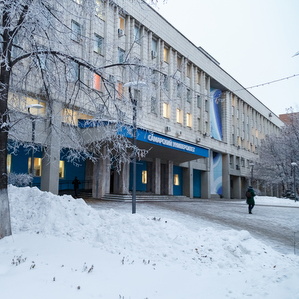The researchers looked into key perturbations arising from the thermal impact. The results of the study can be applied in Earth remote sensing and gravity sensitive tasks, performed on SmallSats. The findings are published in the peer-reviewed Symmetry scientific journal.
According to Samara University scientists, SmallSats are actively used in regular remote sensing. The data they provide makes it is possible to track how the Earth changes in real-time.
When such satellites orbit, they occasionally enter and come out of the shadow, thus experiencing a thermal shock. When the device is on the sunny side, it stays at +121°C (249.8°F), when it is in the shade, it cools down to -157°C (-250.6°F). Such major temperature fluctuations severely affect SmallSats. For instance, it can lead to losing operational control over the device altogether.
"When it comes to controlling the motion of SmallSats, there are a few peculiarities due to the substantial effect flexible elements (e.g. solar panels) have. Therefore, apart from familiar obstacles coming from solar panels due to their own fluctuation, other factors should also be considered. One such factor is thermal shock, which affects the way the device is handled and guided", - said Denis Orlov, assistant researcher at the Samara University Space Engineering Department.
Denis Orlov clarified that the number of flexible elements in the total mass of such satellites is higher than that of other types of spacecrafts.
The researchers pointed out that as far as current science goes, satellites being in the shadow would most certainly affect their performance. For example, surface images could go down in quality, or technological experiments could fail (growing a crystal, analyzing the effect on a living organism or a plant). Therefore, studying thermal shock and working out effective ways of neutralizing its impact on SmallSats could move space materials science forward.
"Theoretical research in this area is mostly based on the fact that the device has a single attached flexible element. We do this to ensure that the calculations are not too complicated, but representative at the same time. However, more often than not, flexible elements are arranged symmetrically. Within the study, we paid particular attention to offset the thermal shock effect on symmetrical flexible elements. Specifically, we carried out simulations for two and four flexible elements," he added.
Through the studies, Samara University scientists assessed the perturbing effect thermal shock has on SmallSats. When flexible elements are laid out symmetrically, such effect comes as inertia from the accelerated movement of the flexible elements’ points. The remaining perturbations cancel each other out due to the symmetry.
"At this point, the need for tangible application of the devices aimed at verifying the results limits the practical significance [of the study]. Refining the model further will boost the efficiency of the design and operation of SmallSats," Orlov noted.
He stressed that the initial stage of the study saw proposals on how to neutralize the thermal shock effect by at least 10%.
In the future, the research team seeks to advance and upgrade the model, and to compare the results of mathematical modeling with the results of SmallSats operation. A separate research area will be dedicated to drawing up recommendations on spacecraft design, aimed at minimizing negative impact of emerging factors.
The study was part of a state assignment from the Ministry of Education and Science of the Russian Federation, representing advanced engineering aerospace school, based at Samara University ("Advanced Engineering Schools" Federal Project).
